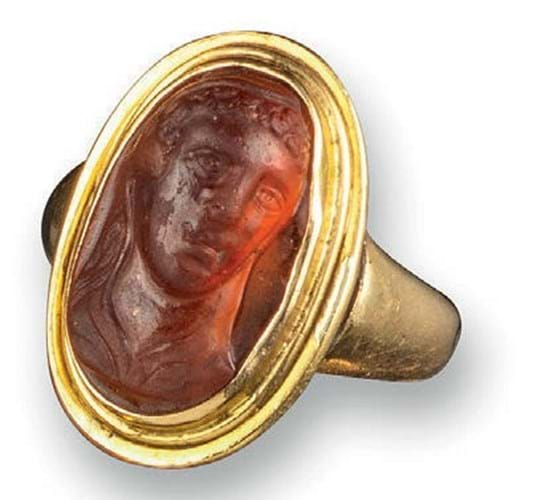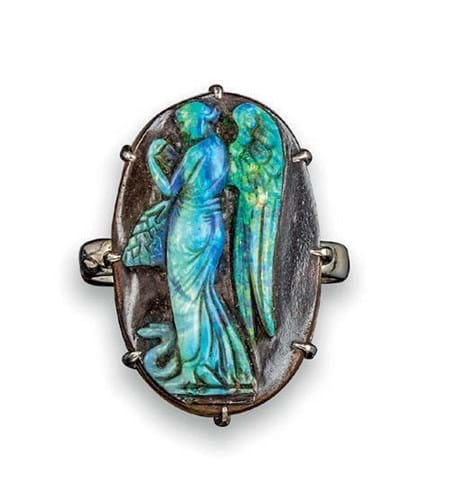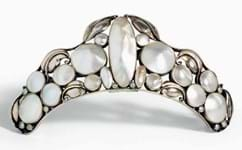
The jewellery auction at Woolley & Wallis (25% buyer’s premium) in Salisbury on January 23 included a collection of cameos and intaglios from the Grand Tour and earlier periods, with the two best-selling examples were ancient gems. Here we pick our four highlights.
1. Roman agate intaglio
A c.1st century BC Roman agate intaglio in a 19th century archaeological revival mount depicting a scene from the mythological founding of Rome – Faustulus discovering the she-wolf suckling the infants Romulus and Remus – improved on hopes of £600-800 to take £4000. It is pictured above.
2. Hellenistic garnet cameo

A Hellenistic garnet cameo of a similar date depicting the head of Omphale in a 19th century gold mount, £4800 at Woolley & Wallis.
Against the same guide of £600-800 a Hellenistic garnet cameo of a similar date depicting the head of Omphale, again in a 19th century gold mount, took £4800.
3. Grand Tour micromosaic ring

A Grand Tour micromosaic ring with a study of a dove, in the manner of the Milan mosaicist Raffaelli (1753-1836), £3800 at Woolley & Wallis.
W&W’s sale in October had included a fine Grand Tour micromosaic ring with a study of a dove, signed on the back Giacoma Raffaelli fece 1793. It had sold at £6500. A very similar unsigned ring in the manner of the Milan mosaicist Raffaelli (1753-1836) appeared in this sale and took £3800.
4. Opal cameo

A boulder opal cameo c.1890 depicting Nike with a serpent by her feet mounted as a white gold scarf ring, £2500 at Woolley & Wallis.
Opal is notoriously difficult to cut (hence its use in simple cabochon) but one craftsman who learned to sculpt it was the German carver Wilhelm Schmidt (1845-1938). He produced work for jewellers such as John Brogden, Child & Child and Giuliano, although little is signed. Gertrud Seidmann’s 1988 book Wilhelm Schmidt: The Last Neo-classical Gem-Engraver details his technique: he typically used a thin layer of opal overlaying a matrix much as contrasting layers of agates were used in cameos.
A popular lot in the sale was a boulder opal cameo c.1890 depicting Nike with a serpent by her feet mounted as a white gold scarf ring. The winning bid was £2500 (estimate £600-900).














